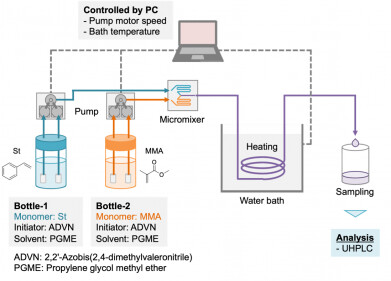-
 How foot stress (prestress) distribution varies with foot function.
How foot stress (prestress) distribution varies with foot function.
Research News
Nano probes uncover cellular responses to pressure
Jan 15 2024
A ground-breaking technique is enabling researchers to map the adaptive responses of the cellular 'skeleton' to external stress. By administering a 'nano-poke' to living cells and observing subsequent changes in the intra-cellular environment, scientists gain insight into how entire cells react to external mechanical pressure.
Led by a team from the National Institute for Materials Science in Tsukuba, Japan, the researchers employ atomic force microscopy, utilising nanoscale probes with tips mere billionths of a meter in size. This method allows for the measurement and mapping of force distribution across the cellular surface and within the cell. Machine learning aids in the analysis and modelling of the measured forces, while fixing and staining techniques unveil the impact of force distortion on the cell's internal structures, including microtubules and actin filaments comprising its 'skeleton.'
Jun Nakanishi, a corresponding author and leader of the Mechanobiology Group, emphasises that cells are smart materials adapting to various stimuli, and understanding these adaptations is crucial for addressing ailments like diabetes, Parkinson's, heart attacks, and cancer.
The study [1] unveils that tensional and compressional forces distribute across actin fibres and microtubules, akin to the poles and ropes of a camping tent. Disabling the force-bearing function of actin fibres reveals the involvement of the nucleus in counterbalancing external forces, shedding light on the nucleus's role in cellular stress response.
Comparing healthy and cancerous cells, the research team notes cancer cells' resilience to external compression and reduced likelihood of activating cell death in response. These distinct responses in cancer cells may pave the way for a diagnostic tool based on cellular mechanics, offering a new approach to differentiate healthy and cancerous cells.
While current cancer diagnosis relies on cell size, shape, and structure, these features sometimes fall short in distinguishing between healthy and diseased cells. The study's findings propose a novel method of assessing cell conditions by measuring force distribution, potentially enhancing diagnostic accuracy.
More information online
Published in the journal Science and Technology of Advanced Materials.
Digital Edition
Lab Asia 31.6 Dec 2024
December 2024
Chromatography Articles - Sustainable chromatography: Embracing software for greener methods Mass Spectrometry & Spectroscopy Articles - Solving industry challenges for phosphorus containi...
View all digital editions
Events
Jan 22 2025 Tokyo, Japan
Jan 22 2025 Birmingham, UK
Jan 25 2025 San Diego, CA, USA
Jan 27 2025 Dubai, UAE
Jan 29 2025 Tokyo, Japan


















